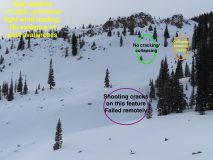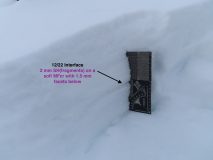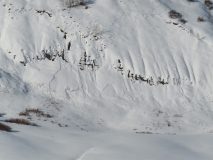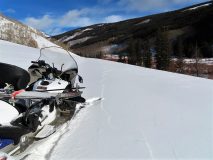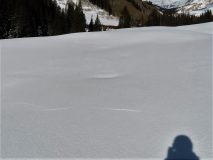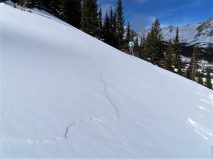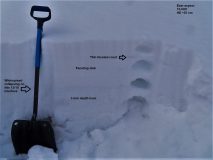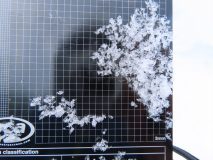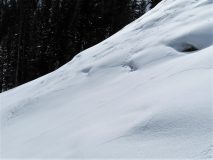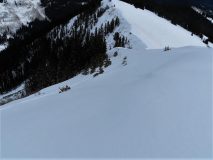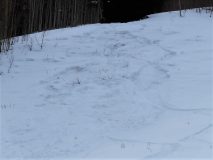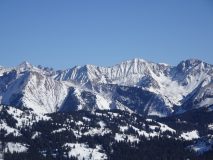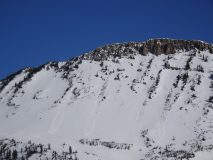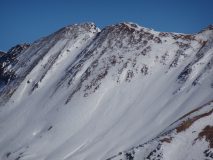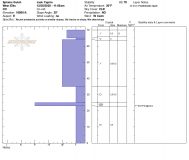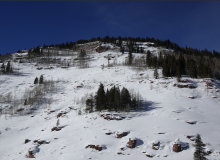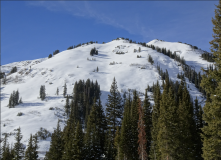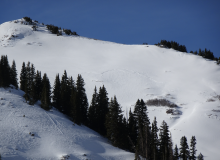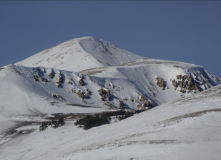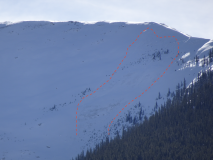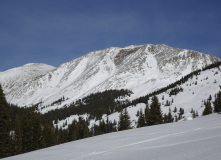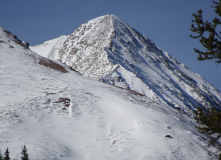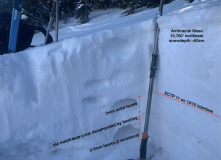Date of Observation: 12/26/2020
Name: Evan Ross
Zone: Northwest Mountains
Aspect: North, North East, East
Elevation: 9,500-12,000
Weather: Pleasant temps above the inversions, calm wind, clear sky.
Snowpack: Primary traveled N and NE, with just a little E. Primary traveling just above, or through, start zones on Axtell. While checking on the Persistent Slab Avalanche Problem. In this terrain, the slabs have become more specific, borderline isolated, and were stubborn to trigger. The previous wind has damaged many of these slopes at all elevations. Outside of checking on this avalanche problem, I would have no desire to otherwise recreate in this area given the below-average snowpack and snow quality.
Below Treeline: The slabs are fading away. Especially below about 10,500ft. Potential avalanche problems at the general BTL elevation were isolated and small. Given the below-average snowpack, even a small slab avalanche would be a nasty ride into trees and all the exposed ground hazards. The best place to find that isolated slab would be on some blown up, cross-loaded portion of a terrain feature. Fairly good distribution of SH below ~11,000ft.
Near Treeline: The same story as lower elevations, a decaying slab. The difference between weak layer grain size/hardness and the slab’s grain size/hardness has become less dramatic. Stoping through plenty of undisturbed snow produced no collapse or shooting cracks, while one ECT test had an ECTP14 SP on the 12/10 interface. The only collapses and shooting cracks, were on NE to E facing slopes, in the Wind Wales right near ridgeline. These results were again stubborn and difficult to produce. The biggest cracks only shot about 10 feet and wouldn’t even connect through the wind-loaded portions of the slope. The previous wind-loading didn’t extend very far into these slopes.
Above Treeline: Didn’t spend much time traveling above treeline on this tour. Looking around it’s more of the same up there. Hard slabs and wind erosion. The snow surface is absolutely ugly looking, wind effected, on many slopes.
-
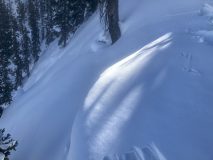
-
NTL shooting crack. Not going very far, and not connecting wind features. This was the best type of result I could find.
-
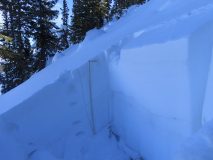
-
North aspect, 11,400 ft. HS 90cm. 30 degree slope. ECTP 14 SC on the 12/10 interface. Stomping and traveling through similar terrain produced no results.
-
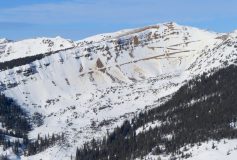
-
Blown, dirty looking snow on a SE aspect of Evans Basin
-
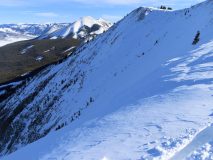
-
North aspect in the shade, and NE aspect just out of sight in the foreground. All heavily wind effected. Hard Slabs hanging right near rideline on some NE.
-
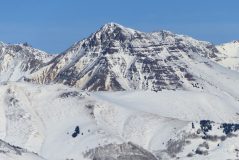
-
Blown, dirty looking snow on the west side of Teo.





